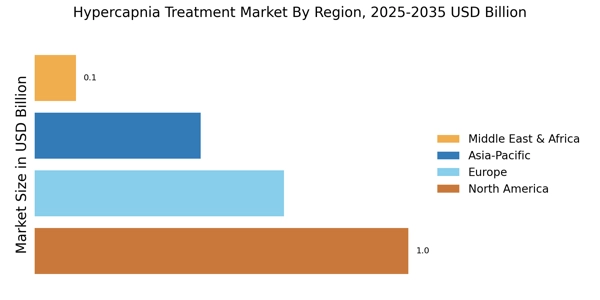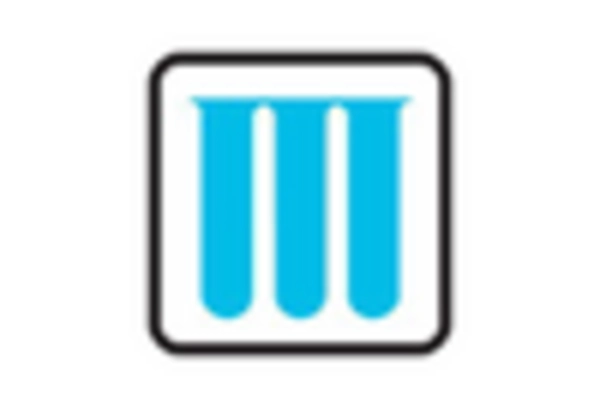Regulatory Support for Innovative Therapies
Regulatory support for innovative therapies is likely to bolster the Hypercapnia Treatment Market. Governments and regulatory bodies are increasingly recognizing the need for advanced treatment options to address complex medical conditions, including hypercapnia. Initiatives aimed at expediting the approval process for novel therapies may encourage pharmaceutical companies to invest in research and development. This supportive regulatory environment could lead to the introduction of new and effective hypercapnia treatments, thereby enhancing market growth. Additionally, favorable reimbursement policies for innovative therapies may further incentivize healthcare providers to adopt these treatments, indicating a promising future for the Hypercapnia Treatment Market.
Rising Demand for Home Healthcare Solutions
The rising demand for home healthcare solutions is emerging as a significant driver for the Hypercapnia Treatment Market. As patients increasingly prefer receiving care in the comfort of their homes, there is a growing need for portable and user-friendly hypercapnia treatment devices. This trend is particularly evident among elderly patients and those with chronic respiratory conditions, who may require ongoing monitoring and treatment. The convenience and accessibility of home healthcare solutions could lead to a surge in the adoption of hypercapnia treatments. Consequently, this shift in patient care dynamics is likely to create new opportunities within the Hypercapnia Treatment Market, as manufacturers develop innovative products tailored for home use.
Increasing Prevalence of Respiratory Disorders
The rising incidence of respiratory disorders, such as chronic obstructive pulmonary disease (COPD) and asthma, appears to be a primary driver for the Hypercapnia Treatment Market. As these conditions often lead to elevated carbon dioxide levels in the blood, the demand for effective hypercapnia treatments is likely to increase. According to recent estimates, respiratory diseases affect millions of individuals, contributing to a substantial healthcare burden. This trend suggests that healthcare providers may increasingly seek innovative therapies to manage hypercapnia, thereby expanding the market. Furthermore, the aging population, which is more susceptible to respiratory ailments, could further amplify the need for hypercapnia treatments, indicating a robust growth trajectory for the Hypercapnia Treatment Market.
Technological Advancements in Monitoring Devices
Technological innovations in monitoring devices are likely to play a crucial role in the Hypercapnia Treatment Market. Enhanced monitoring technologies, such as non-invasive capnometers and advanced ventilators, facilitate real-time tracking of carbon dioxide levels in patients. This capability not only aids in timely intervention but also improves patient outcomes. The integration of artificial intelligence and machine learning in these devices may further optimize treatment protocols, making them more efficient. As healthcare systems increasingly adopt these advanced technologies, the demand for hypercapnia treatments is expected to rise. This trend indicates a potential shift towards more personalized and effective management strategies within the Hypercapnia Treatment Market.
Growing Awareness of Hypercapnia and Its Implications
The growing awareness of hypercapnia and its implications among healthcare professionals and patients is likely to drive the Hypercapnia Treatment Market. Educational initiatives and campaigns aimed at highlighting the risks associated with elevated carbon dioxide levels are becoming more prevalent. This increased awareness may lead to earlier diagnosis and treatment of hypercapnia, thereby expanding the market. Furthermore, as patients become more informed about their conditions, they may actively seek out treatment options, further propelling market growth. The emphasis on patient education is expected to foster a more proactive approach to managing hypercapnia, indicating a positive outlook for the Hypercapnia Treatment Market.


















Leave a Comment